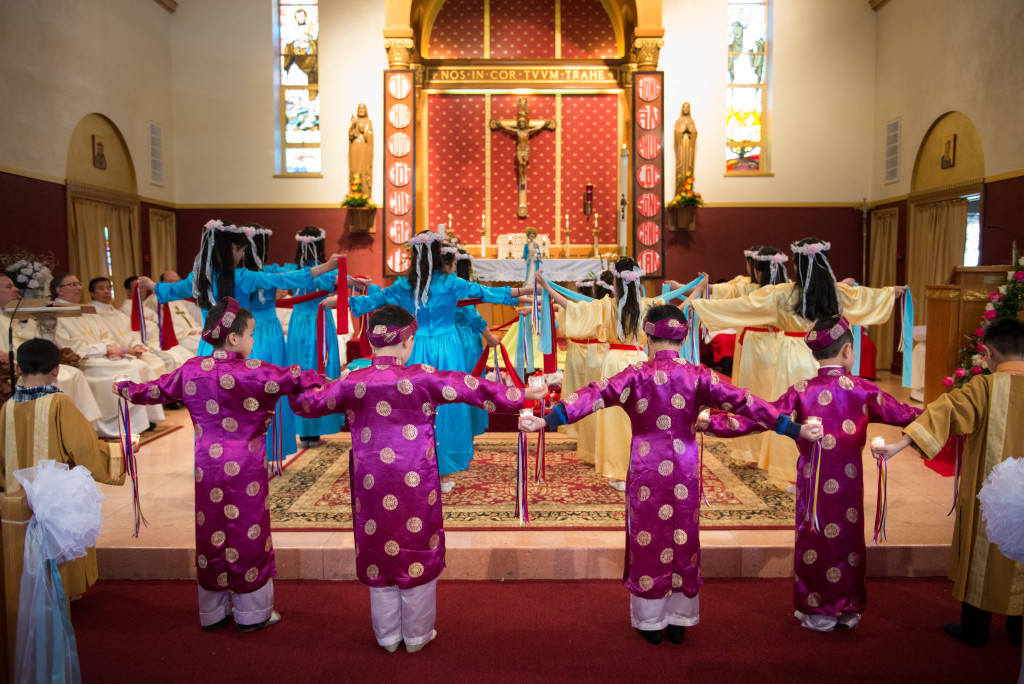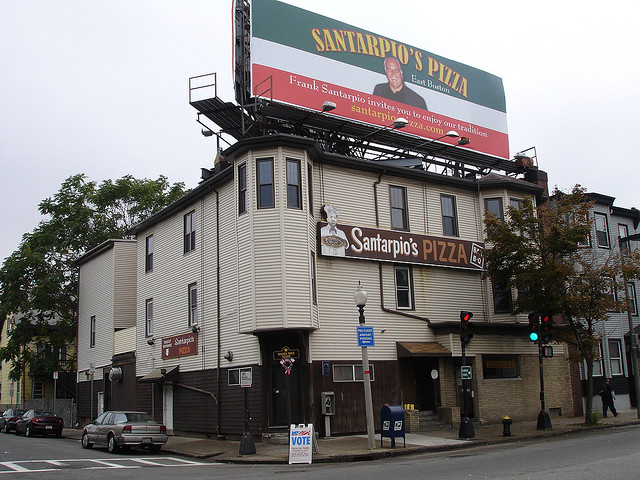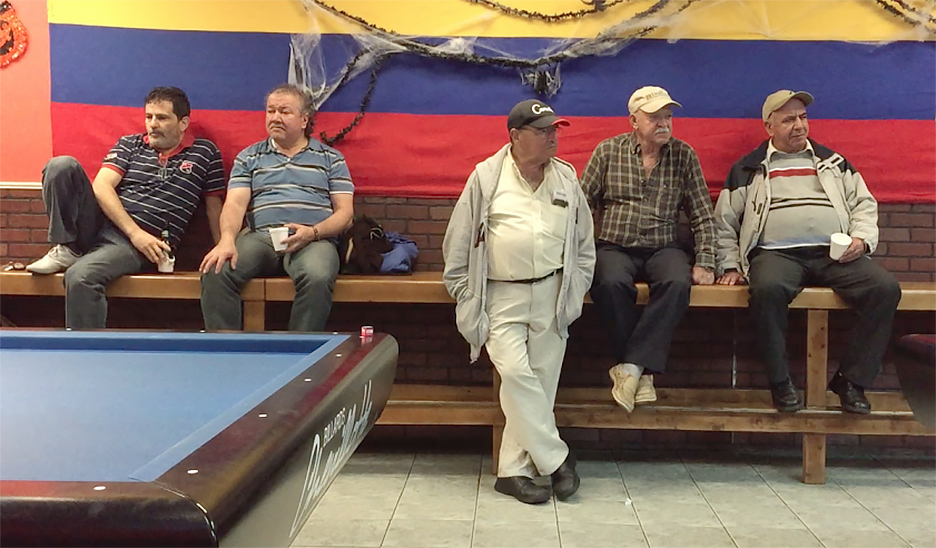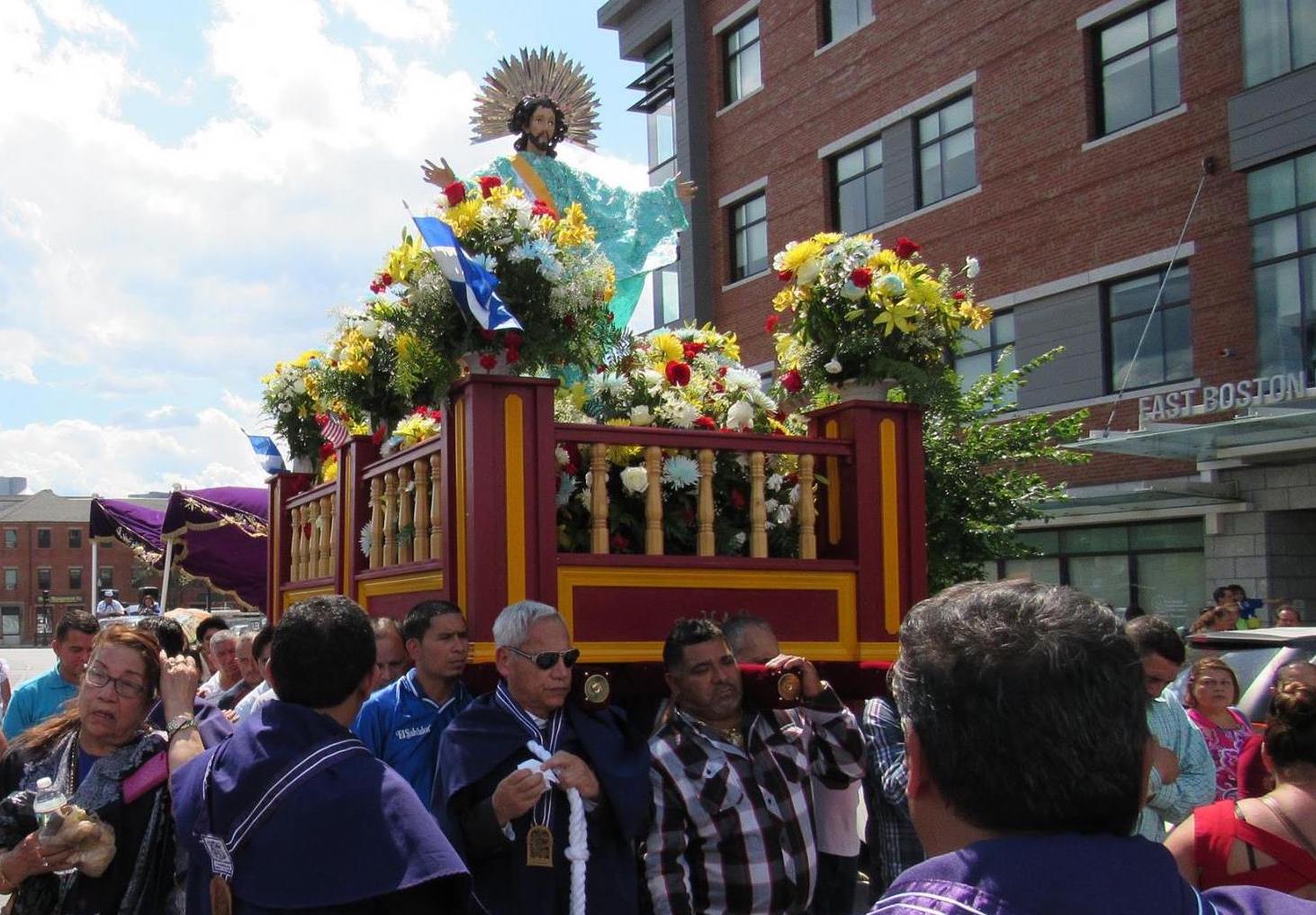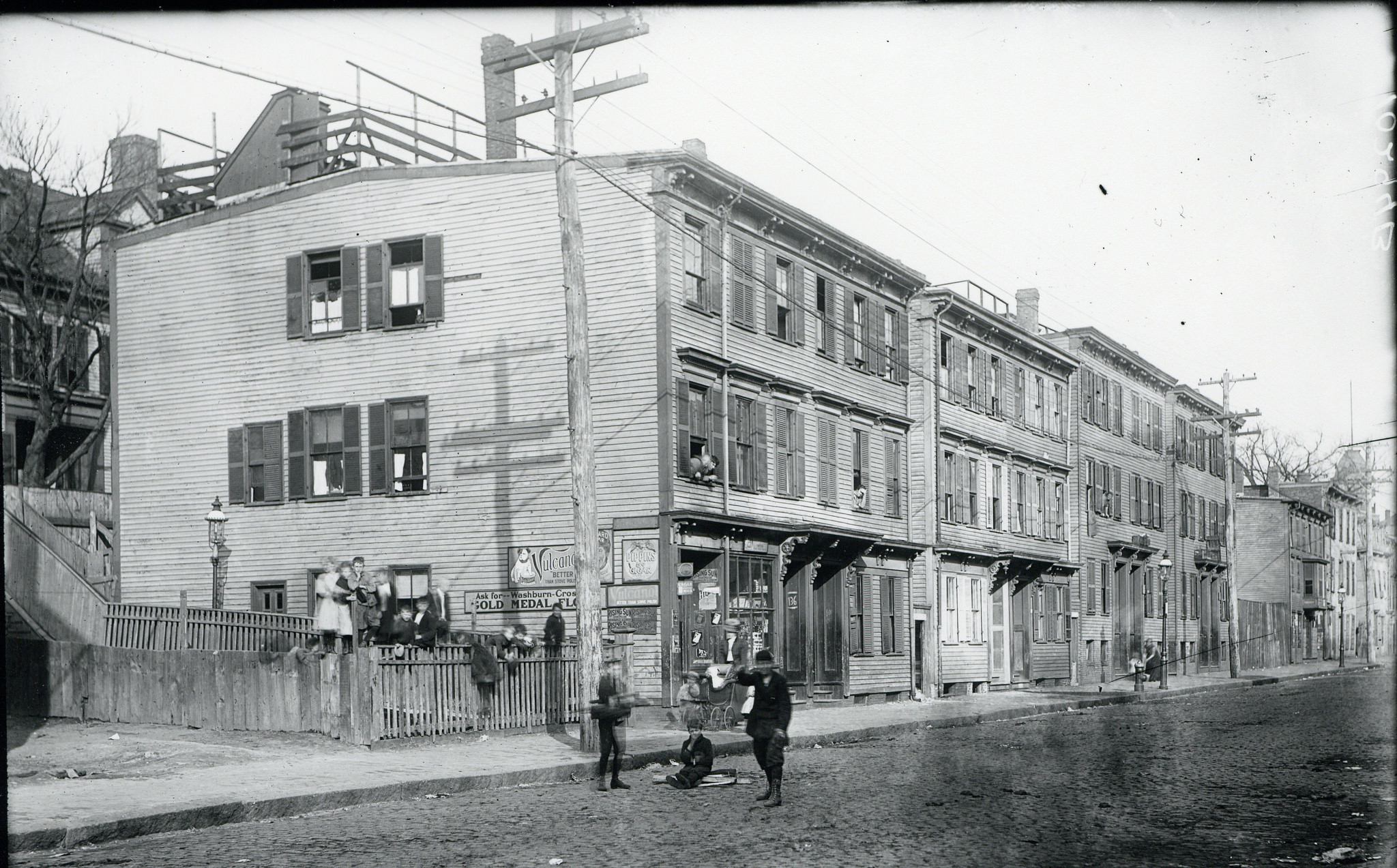Coronation of the Blessed Mother ceremony during the 25th anniversary of the Emmanuel Vietnamese Community at Sacred Heart Catholic Church in East Boston, 2015. Photo courtesy of the Boston Archdiocese.
Prior to 1980, the Southeast Asian population in East Boston was practically nonexistent; the 1980 Census recorded a mere 118 Asian inhabitants in the neighborhood, mainly from China. With the end of the Vietnam War and political strife across much of Southeast Asia in the late 1970s, the United States began accepting refugees from Vietnam and Cambodia. Some of these newcomers and their families settled in East Boston in the 1980s, but many got a hostile reception from their white neighbors. Although some moved away, others stayed and built a small but supportive community, and several hundred Southeast Asians still reside in Eastie today.
Migration and Settlement
With end of the Vietnam war, a small stream of south Vietnamese refugees came to the US under the Indochina Migration and Refugee Assistance Act of 1975. Many thousands more came in the late 1970s and 1980s, as continuing repression led to the exodus of the boat people—often ethnic Chinese merchants and rural Vietnamese—who fled in small wooden ships, exposing them to rough seas, pirate attacks, and prolonged deprivation. In neighboring Cambodia, where the genocidal Khmer Rouge regime came to power in 1975, millions of Cambodians were tortured and executed, with hundreds of thousands more perishing because of starvation and disease. Like the Vietnamese, thousands of Cambodian refugees also made their way to the US and other countries after spending months or years in refugee camps in Thailand, the Philippines, and other Asian countries.
With the help of churches and refugee organizations, Vietnamese and Cambodian families were resettled in several Boston neighborhoods in the early 1980s, including East Boston. With a declining white population, relatively low rents, and easy access to mass transit, the neighborhood became a popular site for immigrant and refugee resettlement. In 1982, Our Savior Lutheran Church near Maverick Square began sponsoring Southeast Asian families, opening a refugee assistance task force in the church’s basement. Settling in Eagle Hill and Orient Heights, the earliest arrivals were soon joined by their family members from Vietnam and Cambodia. By 1990, East Boston had attracted more than a thousand Southeast Asian residents.
Nativism and Racism
Like many new migrant groups, Southeast Asians in East Boston initially encountered a wave of nativism and racial hostility. Fearing that newcomers took jobs away from the native born, some longtime residents also expressed lingering anti-Asian sentiment in the wake of the Vietnam war. Moreover, the temporary cash assistance that refugees received from federal programs was another source of resentment, with false rumors circulating that newcomers got free housing and cars from the government. In East Boston, as in many resettlement areas across the country, Southeast Asians became the targets of widespread harassment and abuse in the 1980s.
According to a 1987 report by the Asian American Resources Workshop, banging on doors, rock throwing, and verbal abuse were daily occurrences for Cambodian and Vietnamese residents of East Boston. Vandalism to immigrant’s homes, cars, and other properties were commonplace. In some cases, however, animosity towards the newcomers escalated into more violent and aggressive actions, including physical attacks and arson.
Within a month after settling into their East Boston home, one of the first refugee families to arrive in the neighborhood became targets of such hostility. In December 1982, the family endured relentless banging on their doors and verbal abuse directed at their home. The harassment intensified, ending with a teenager entering the family’s home and setting fire to their belongings. Unfortunately, this was not an isolated event. The occurrence of fires in Southeast Asian homes was so frequent that longtime residents began blaming the newcomers for causing the fires and endangering other homes in the neighborhood.
Fierce altercations also broke out in local streets. One particularly heinous exchange occurred on Memorial Day in 1985, when four Cambodian men were brutally attacked by some 15 to 20 white teens brandishing hockey sticks and a lead pipe, leaving three of the Cambodians hospitalized. These attacks on Southeast Asians were not limited to East Boston—in the summer of 1985 alone, similar attacks occurred in South Boston, Dorchester, Revere, and other nearby communities.
Organizing to stop the violence, the East Boston Ecumenical Community Council together with the refugee task force at Our Savior Church launched Project Welcome in the summer of 1985. Comprised mainly of local church members, Project Welcome organized community meetings and block patrols, worked with the Boston Police Department’s Community Disorders Unit, did multilingual outreach to local refugee communities, and sponsored a festival of unity to bring the community together. These measures helped, and the wave of violence gradually abated, but for many Cambodians especially, the trauma of these early years meant that they would not stay permanently in East Boston.
Education and Employment
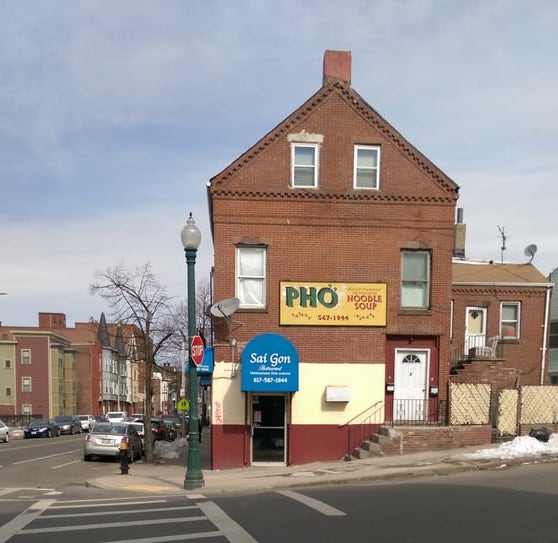
Coming from war-ravaged countries, Cambodian and Vietnamese immigrants tend to have relatively low levels of education. In Boston in 2015, 39 percent of foreign-born Vietnamese had not completed high school, compared to 28 percent of the foreign born overall and 9 percent of the native born. At the same time, fewer Vietnamese immigrants had earned a bachelor’s or graduate degree, only 17 percent compared to 29 percent among the foreign born generally and 52 percent among the native born. Educational attainment for Cambodians has been even more limited. Access to education for the second generation, however, has improved in Boston, and many young Southeast Asians have been earning both high school and college degrees.
In the labor force too, Southeast Asians have faced substantial barriers due to lack of education and English proficiency. About a quarter of all foreign-born Vietnamese worked in the service sector in 2015, along with significant numbers in other blue-collar fields such as construction, manufacturing, and transportation. By contrast, only 14 percent worked in managerial or professional jobs compared to 18 percent of the foreign born overall and 28 percent of the native born. Historically, employment indicators for Cambodians in Boston have been even lower and rates of unemployment and poverty higher.
Despite these disadvantages, some Southeast Asians in East Boston have managed to pursue both higher education and upward mobility. Like many refugees arriving after the Vietnam war, Anh Vu came to East Boston to escape communist oppression at home. Initially, he worked any job that would hire him in order to support his dream of getting a formal education. Anh was able to finish high school and eventually attended Bunker Hill Community College where he had several work-study jobs to support his studies. On summer weekends, he would even go as far as Cape Cod to find work. After two years at Bunker Hill, Anh applied to some four-year colleges and decided to attend Sienna College in Albany, New York, where he majored in psychology and philosophy.
Immediately following his graduation, Anh returned to East Boston to work in the Boston Municipal Court, and went on to become First Assistant Chief Probation Officer in the court’s West Roxbury Division. Recounting this story, Anh stressed education as the most important path to advancement. Clearly, many second generation Vietnamese have been doing the same and are now entering a wider variety of professional, administrative, and entrepreneurial fields.
Religious and Cultural Life
Like other immigrant groups that settled in East Boston, Southeast Asians brought with them a strong religious culture and identity. Throughout the Indochinese peninsula, the overwhelming majority of people practice one of two schools of Buddhism. The “Northern School” of Buddhism, Mahayana Buddhism, is the predominant religion practiced by the Vietnamese, while Cambodians mainly practice the “Southern School” of Theravada Buddhism. Upon arriving in East Boston, Southeast Asian immigrants quickly established a physical place to build and support their strong religious community.
Founded in 1985 by Reverend Thich Giac Duc, the Universal Buddhist Congregation (UBC) is located in Eagle Hill in a former Unitarian Church. The UBC purchased the church in 1987 and renovated it with mostly volunteer labor. As East Boston’s only Buddhist Temple, the UBC welcomes all newcomers, but Vietnamese members predominate and all services are conducted in Vietnamese. The UBC attracts both local Vietnamese as well as many who now live in surrounding suburbs. Cambodian Buddhists, by contrast, are more likely to attend Theravada temples in nearby Revere and Lynn.
Although Buddhism is the predominant religion in Southeast Asia, a considerable number of Vietnamese immigrants to the US were Catholic. Following the Vietnam war, Catholic refugee organizations facilitated the safe passage of hundreds of thousands of Southeast Asian refugees, many of them Catholics from Vietnam. Those refugees went on to form Vietnamese religious communities within the Boston Archdiocese. In East Boston, they founded the Emmanuel Vietnamese Catholic Community in 1990. Since that time, the Emmanuel community has offered masses in Vietnamese and has hosted ten Vietnamese priests who have ministered to the local community. Today, the Emmanel community operates out of Sacred Heart Parish in Lower Eagle Hill and has helped make the Vietnamese Catholic Community one of the fastest growing in the Archdiocese of Boston.
Both the Emmanuel community and the UBC have become places where Southeast Asians have preserved their heritage by practicing homeland rituals and customs. Celebrations like the Vietnamese New Year and Moon Festivals take place every year in East Boston. Additionally, traditional performances and dances preserve and demonstrate the liveliness and vibrancy of Southeast Asian culture. The East Boston Buddhist Temple Lion Dance Troupe, a non-profit Buddhist Youth Group, has presented its performances in Boston and throughout Massachusetts. Performed during the lunar New Year and other cultural events, the dances include colorful lions, dancers and musical accompaniment.
Leaving East Boston
For many Southeast Asian newcomers, East Boston served as a temporary destination in their journeys to other areas that better suited their needs. In 1990, the estimated Southeast Asian population of East Boston peaked with approximately a thousand residents (609 Vietnamese and 372 Cambodians); by 2015, there were only about half that number (330 from Vietnam and 127 from Cambodia). The reasons for this outmigration are varied. For some, economic advancement led them to purchase homes in nearby suburbs; for others, the traumas of war, genocide, migration, and nativist violence may have encouraged them to seek larger and more secure communities.
For Cambodians in New England, Lowell has become the premier site for resettlement, with more than seven thousand Cambodian-born residents in 2015 and a rich assortment of cultural and religious institutions and services. Even closer to East Boston was Lynn, which has also seen a steady increase in its Cambodian-born population, growing from 1457 in 1990 to 2094 in 2015. Similar to Lowell’s role for Cambodian immigrants, the Fields Corner section of Dorchester has become the center of Vietnamese life in Boston, serving as home to roughly three quarters of the city’s Vietnamese. Since the late 1980s, Fields Corner and Dorchester more generally have attracted Vietnamese immigrants and refugees from across the city, including some from East Boston.
As with earlier groups of immigrants, East Boston has served as a zone of emergence for its Southeast Asian residents. But unlike many earlier groups who tended to disperse to predominantly white suburbs, Eastie’s Cambodians and Vietnamese have often moved to other ethnically-concentrated communities where their homeland traditions, culture, and religions can safely flourish.
–Mason Bratberg, Boston College ’17
Works Cited
Boston Redevelopment Authority, “East Boston ‘29 Page Profile’ 1990 Census of Population and Housing,” March 1993.
Boston Redevelopment Authority, Imagine All the People: Vietnamese in Boston, 2016.
“Brawl Renews Concerns about Race Relations,” East Boston Community News, June 4, 1985.
Interview with Ahn Vu by Mason Bratberg, October 2016.
Johnson, Marilynn. The New Bostonians: How Immigrants Transformed the Metro Region Since the 1960s. Boston: University of Massachusetts Press, 2015.
Song, Elaine. “To Live in Peace: Responding to Anti-Asian Violence in Boston.” Boston, MA.: Asian American Resource Workshop 1987.
“Youths Battle on East Boston Streets,” East Boston Times Leader Free Press, June 5, 1985.

